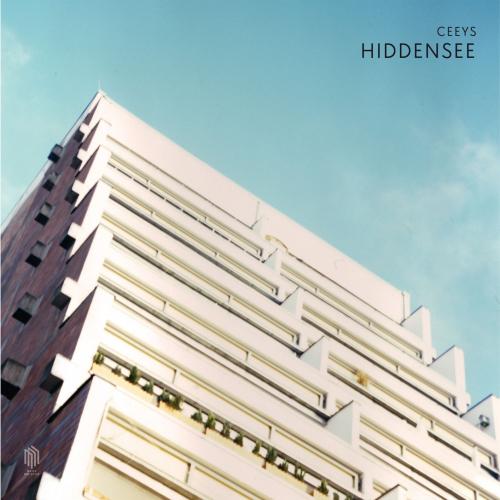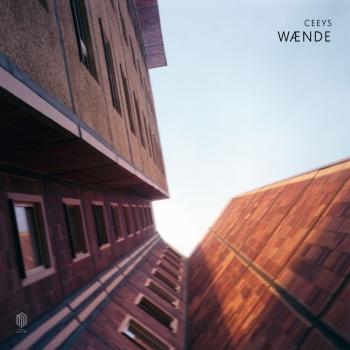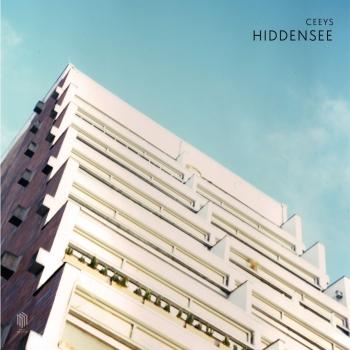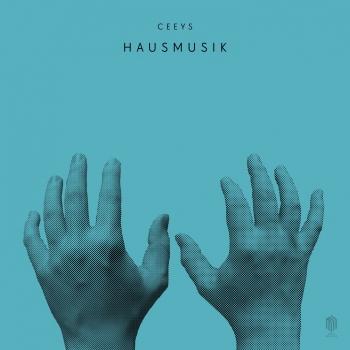
Hiddensee Ceeys
Album info
Album-Release:
2019
HRA-Release:
14.06.2019
Album including Album cover
- 1 Trabanten 01:54
- 2 Leaving Wallbook 04:25
- 3 Sagres 03:24
- 4 All Airport Delays 01:41
- 5 Horizont 03:50
- 6 Helikopter 04:56
- 7 Lost and Found 03:49
- 8 Solar Sunny 04:13
- 9 0991 02:52
- 10 Wanda 03:28
- 11 Wanderer 03:10
- 12 Hiddensee 03:20
Info for Hiddensee
Brothers Sebastian and Daniel Selke’s music can be likened to an exercise of memory retrieval. All of their four albums explore and pay tribute to their past; growing up in East Berlin in the final decade of the GDR. At its core, the duo’s music can be heard as a dialogue between siblings about their shared upbringings and experiences, a conversation given form through Sebastian’s cello and Daniel’s piano keys, in the fusion that becomes CEEYS. In 2017, the duo also founded Q3 AMBIENTFEST, a three-day happening for neoclassical and experimental music, which seeks to explore the cultural and musical impact of East German heritage.
But the memories rescued through their music are far from only historical, they are foremost emotional recollections. Their 2018 album, WÆNDE was as much about the fall of the Berlin Wall in 1989 and its implications in society, as it was about the thin walls that separated the brothers at home, and through which they heard each other practicing their instruments when young. The same can be said of their latest album HIDDENSEE, which speaks both of a physical place - the picturesque East German island in the Baltic Sea - as well as a place and time of spiritual importance for the brothers. As East Germany opened itself in the 90s, the two brothers would find themselves traveling out of their homeplace to the rest of the world, and while grateful for their newfound freedoms, they would also come to miss their childhood Eden.
The duality of east and west, novelty and familiarness, is also thoroughly explored through CEEYS’ musical style, which merges influences from the luminaries of classical music such as Bach, Handel, Haydn, Mozart and Beethoven, with the lesser known artists of East Germany and the contemporary musicians Sebastian and Daniel were exposed after the fall of the wall. The merging of historical periods also extends to the equipment used on the album, although the cello and piano are at the core of the album instruments from the communist era were also employed. CEEYS studio setup included a fully analogue mixing console with high-end tube preamps originally built between the 1960s and 1970s for professional radio broadcasting, as well as a select collection of iconic restored microphones, spring reverb systems, keyboard instruments and rhythm boxes, many of which were originally built between the 1950s and 1980s in either East Germany or the Soviet Union.
Making the complex recording process even more authentic, HIDDENSEE was also partly produced at the legendary Funkhaus Berlin, once the site of East Germany’s state broadcasting center. The brothers had the chance to work at Saal 3, which currently hosts Nils Frahm’s impressive studio. The atmosphere within Funkhaus, with its unique architecture, reverb chambers and analogue treasures, is as stately and magnificent as that of a museum, providing the perfect setting for delving into the past.
In a peaceful and focused manner, HIDDENSEE exposes the brothers’ incredible versatility and ability to explore with different instruments, sounds, and styles. Likewise, it also exposes the intimate dynamics of working with family. Daniel and Sebastian embark on the monumental task of searching for lost times together, in a dialogue that juxtaposes and complements each others’ memories in a way only a fraternal connection can do.
Sebastian Selke, cello
Daniel Selke, piano
CEEYS
are the Berlin-born, Potsdam-based brothers Sebastian and Daniel Selke, an award-winning cello-piano duo performing an impressive experimental but accessible minimalism between avant-garde and pop that incorporates elements of jazz, ambient and classical chamber music.
"Hybrid" is a word that has always been vital to CEEYS' vocabulary, but its application is not limited to the manner in which cellist Sebastian Selke and his brother, pianist Daniel Selke, combine their two instruments so harmoniously. Instead, like the duo's very name – which merges the words "VIOLONCELLE" (fr.: cello) and "KEYS" – it is reflective of their overall aesthetic, one in which they integrate the many ingredients that have helped shape them as both musicians and people.
"Brought up in the last decade of the former GDR, we use our releases to come to terms with our memories, impressions and feelings about these rather hybrid times." – CEEYS
The idea of crossing musical barriers is not at all new to the Selkes and resonates in a particularly powerful fashion: the two brothers, now based in Potsdam, grew up in East Berlin during the final decade of the Communist-era German Democratic Republic. CEEYS' award-winning work is provoked by their urge to explore recollections of their youth, both before and after the fall of the regime, and to apply those lessons and influences to contemporary music.
Encouraged to play from the age of five by their parents, actress Gabriele Selke and radio presenter Harald Selke, the brothers went on to study music formally. Sebastian and Daniel have been featured on numerous album releases and soundtracks. Sebastian has also collaborated with Ólafur Arnalds and Spitfire Audio. They've also reworked the likes of Peter Broderick, Carlos Cipa and Lambert, and released two albums of their own, 2016’s The Grunewald Church Session and 2017’s Concrete Fields, released by 1631 Recordings, distributed digitally worldwide by Decca Publishing and Deutsche Grammophon.
Currently, Ceeys are presenting their third album "WÆNDE" at the Berlin label Neue Meister.
This album contains no booklet.













